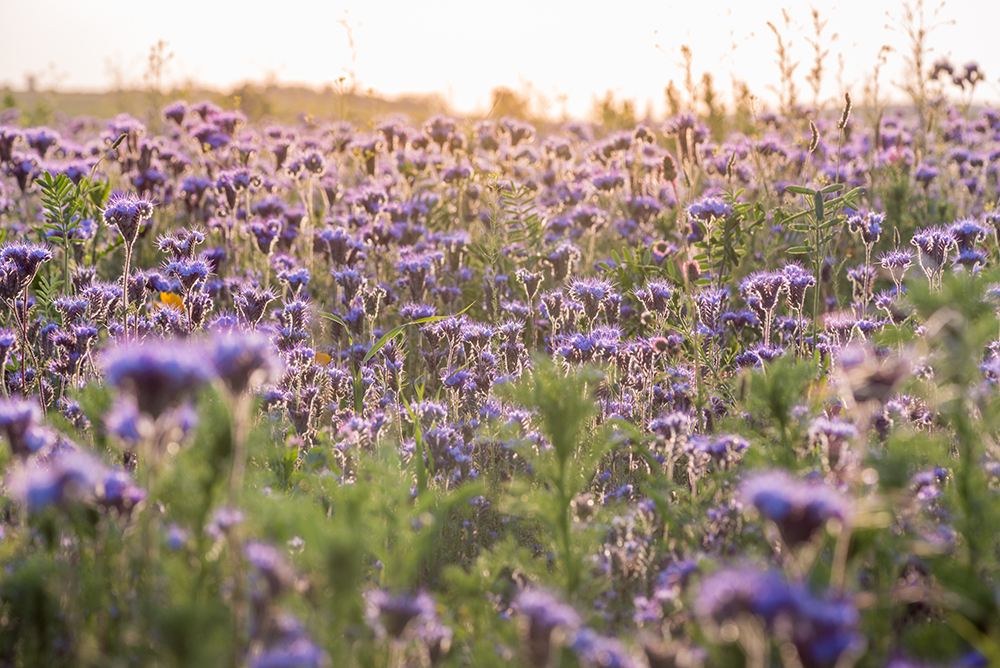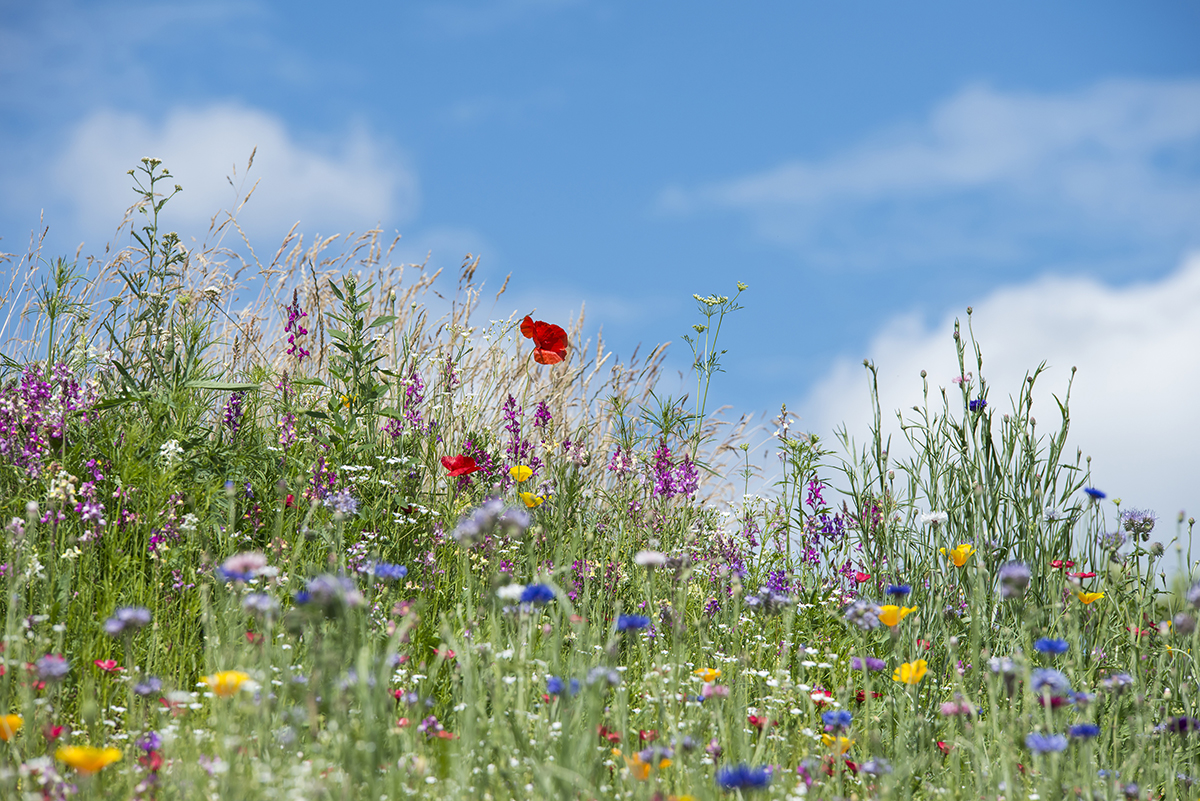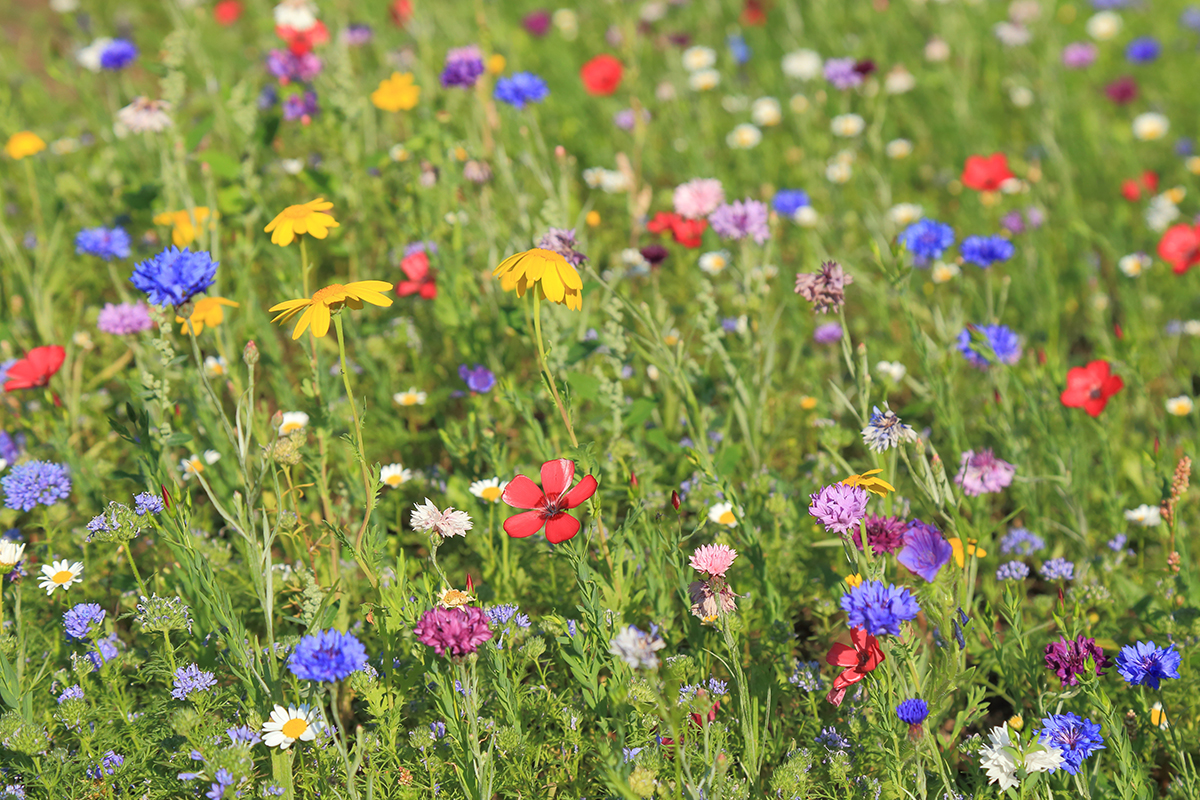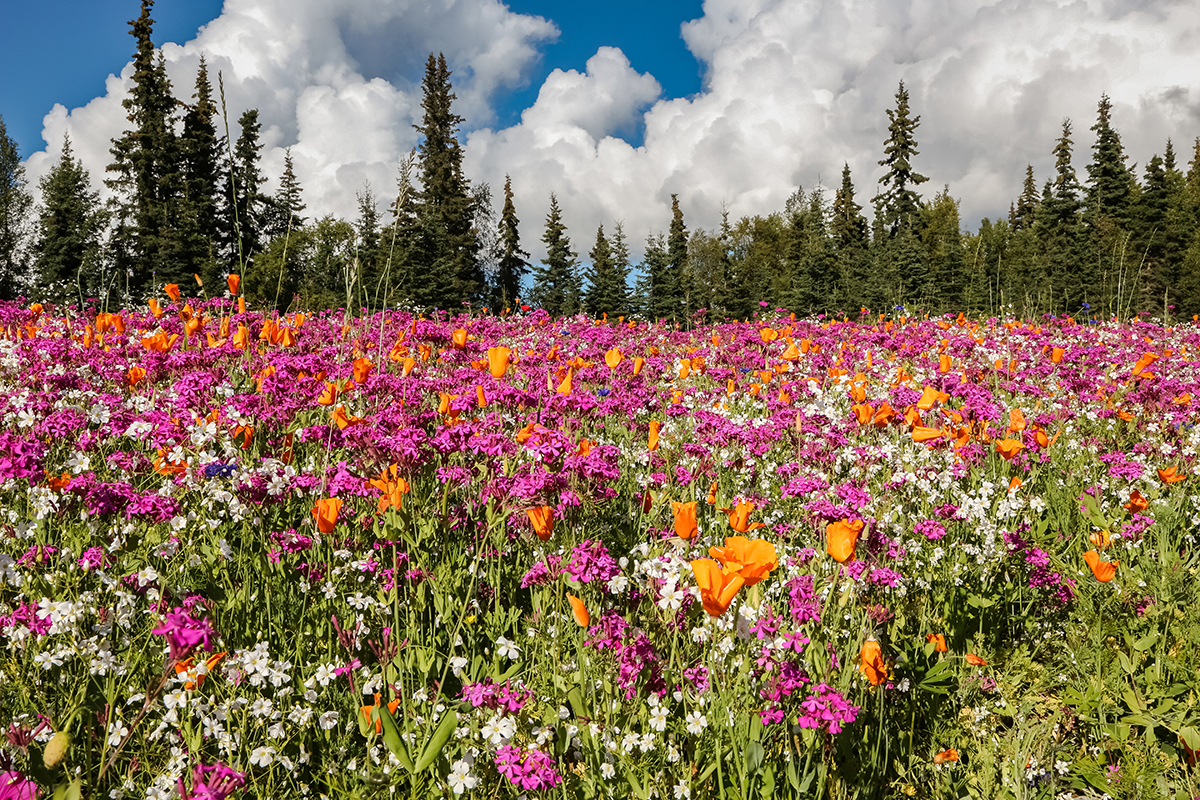Wildflower Seeding Explained – What does Wildflower mean?
Wildflower seeding and meadows are a vital part of the worlds ecosystem, providing a bounty of pollen, habitats and food for “pollinators” such as bees.
What does Wildflower mean?
Wildflower is a term that implies the plant probably is neither a hybrid nor a selected cultivar that is in any way different from the way it appears in the wild as a native plant, even if it is growing where it would not naturally.

Native vs non-native Wildflowers
Native plants are plants indigenous to a given area in geologic time. This includes plants that have developed, occur naturally, or existed for many years in an area.
Non-native is a species that is not native to a specific location (an introduced species), and that has a tendency to spread to a degree believed to cause damage to the environment, human economy or human health.
UK Flower Types
- UK (native)
- Northern hemisphere excluding the UK (non-native – Northern)
- Southern hemisphere (non-native – Southern or ‘exotics’)

Beautiful landscape image of wildflower meadow in Summer
Wildflower Benefits
Wildflowers create pollinators (bees and other insects that pollinate plants) and also contribute to scientific and medical research. Some UK native wildflowers contain compounds which can be used in drugs to treat diseases.

Detail of colorful wildflower meadow in summertime
Planting Wildflowers
It is important that the correct mixture is selected to coincide with the Soil type and drainage characteristics of each site. Different Wildflowers have different needs and it will depend on factors such as the climate and weather on how successfully they will flourish. In the UK the months of March/April and August/September are generally the most suitable. Creating a successful wildflower meadow usually takes 3-5 years.

Getting Started
An initial site assessment and preparation of the seedbed by a professional prior to sowing is usually advised. If you wish to carry this out yourself you will need to assess the soil and then choose the correct flowers for that location. A good source of information for this can be found here and includes details on such species as, Dog Rose – Rosa canina, Honeysuckle – Caprifoliaceae, Enchanter’s nightshade – Circaea lutetiana and Columbine – Aquilegia.